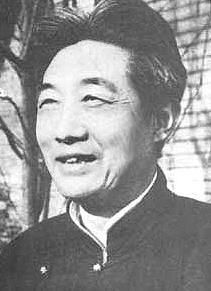- Xu Beihong
chinese-name|
Xu Infobox Artist
bgcolour = #FFF000
name = Xu Beihong (徐悲鴻)

imagesize =
caption =
birthname =
birthdate = birth date|1895|7|19
location =Yixing ,Jiangsu
CHN
deathdate = death date and age|1953|9|26|1895|7|19
deathplace =
nationality =
field =Oil Painting , Chinese ink painting
training =
movement =
works =
patrons =
influenced by =
influenced =
awards =Xu Beihong (zh-tsp|t=徐悲鴻|s=徐悲鸿|p=Xú Bēihóng) was primarily known for his "
shuimohua " (Chinese ink paintings) of horses and birds and one of the first Chinese artists to articulate the need for artistic expressions that reflected a new modern China at the beginning of the 20th century. He was also regarded as one of the first to create monumental oil paintings with epic Chinese themes - a show of his high proficiency in an essential Western art technique.citation|title=Singapore Art Museum (SAM) opens 'Xu Beihong in Nanyang' a Solo Exhibition|publisher=Art Knowledge News|url=http://www.artknowledgenews.com/Xu_Beihong.html|accessdate=06-04-2008]Biography
Xu began studying classic Chinese works and calligraphy with his father
Xu Dazhang when he was six, and Chinese painting when he was nine. In 1915, he moved toShanghai , where he made a living off commercial and private work. He traveled toTokyo in 1917 to study arts. When he returned to China, he began to teach atPeking University 's Arts school at the invitation ofCai Yuanpei . Beginning in 1919, Xu studied overseas inParis at theÉcole Nationale Supérieure des Beaux-Arts , where he studiedoil painting anddrawing . His travels around Western Europe allowed him to observe and imitate Western art techniques. He came back to China in 1927 and, from 1927 to 1929, gained a number of posts at institutions in China, including teaching atNational Central University (nowNanjing University ) in the former capital cityNanjing .In 1933, Xu organized an exhibition of modern Chinese painting that traveled to
France ,Germany ,Belgium ,Italy , and theSoviet Union . DuringWorld War II , Xu traveled toSoutheast Asia , holding exhibitions inSingapore andIndia . All the proceeds from these exhibitions went to Chinese people who were suffering as a result of the war.After the founding of thePeople's Republic of China in 1949, Xu became president of theCentral Academy of Fine Arts and chairman of the "Chinese Artists' Association".Xu Beihong was a master of both oils and Chinese ink. Most of his works, however, were in the Chinese traditional style. In his efforts to create a new form of national art, he combined Chinese brush and ink techniques with Western perspective and methods of composition. He integrated firm and bold brush strokes with the precise delineation of form. As an art teacher, he advocated the subordination of technique to artistic conception and emphasizes the importance of the artist's experiences in life. Of all of the Painters of the modern era, it can be safely said that Xu is the one painter most responsible for the direction taken in the modern Chinese Art world. The policies enacted by Xu at the beginning of the Communist Era continue to control not only official Government Policy towards the arts, but they continue to direct the overall direction taken in the various Art Colleges and Universities throughout China.
Xu enjoyed massive support from art collectors across Asia. Between 1939 and 1941, he held solo exhibitions in in Singapore, India and Malaya (Penang, Kuala Lumpur and Ipoh) to help raise funds for the war relief effort in China. In one war benefit exhibition in March 1939, Xu held a group exhibition with Chinese ink painting masters Ren Bonian (zh-sp|s=任伯年|p=Rèn Bónián) and Qi Baishi (zh-sp|s=齐白石|p=Qí Báishí), and showcased 171 works of art at the
Victoria Memorial Hall . [cite news|title=徐悲鸿的故事说不完 :Xu Beihong's stories are endless|publisher=联合早报 LianHe ZaoBao|date=2008-04-05|page=23]He also met luminaries such as
Rabindranath Tagore andMahatma Gandhi during his stay in India, and got his sources of inspiration which led to the creation of iconic works such as the 4.21m-wide "The Foolish Old Man Who Removed the Mountains" painting on show at SAM. Artworks like "After a Poem of the Six Dynasties", "Portrait of Ms Jenny" and "Put Down Your Whip" were also created during his sojourns inSoutheast Asia . SAM Director Kwok Kian Chow mentioned that Xu's name tops the list in Asian modern realism art, and his connections with various parts of Asia and Europe opened a new chapter of historical narratives, exchanges and influences of aesthetics and ideas in art.Xu constantly pushed the boundaries of visual art with new techniques and international aesthetics, in bid to reinvent Chinese art. In fact, Xu's influence extends beyond China in the early 20th-century. Many pioneer Singapore artists such as
Chen Wen Hsi ,Lee Man Fong andChen Chong Swee looked up to him as a mentor and a worthy peer, sharing Xu's advocate to closely observe nature and inject realism into Chinese painting.cite news|last=Chow|first=Clara|title=A little horseplay|publisher=South China Morning Post|date=2008-04-27]Xu died of a stroke in 1953. After his death, a Xu Beihong Museum was established at his home in Beijing.
Gallery
References
External links
* [http://www.msnusers.com/TheYatesCollection/hsubeihongpaintingalbums.msnw Hsu Beihong's Album Paintings]
* [http://www.xubeihong.org/home.htm Xu Beihong Gallery and Information]
Wikimedia Foundation. 2010.
